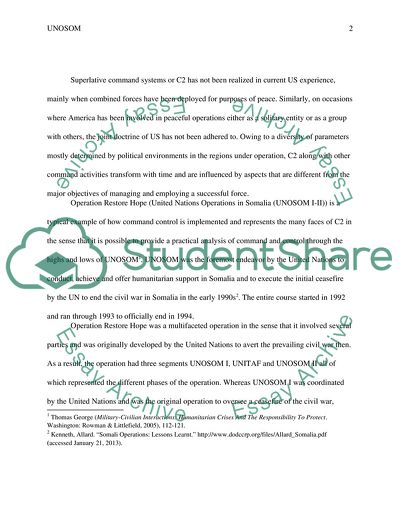Cite this document
(Command and Control (C2) Execution during Operation Restore Hope Research Paper Example | Topics and Well Written Essays - 2500 words, n.d.)
Command and Control (C2) Execution during Operation Restore Hope Research Paper Example | Topics and Well Written Essays - 2500 words. https://studentshare.org/military/1792614-how-command-and-control-c2-was-executed-during-operation-restore-hope-united-nations-operations-in-somalia-unosom-i-ii
Command and Control (C2) Execution during Operation Restore Hope Research Paper Example | Topics and Well Written Essays - 2500 words. https://studentshare.org/military/1792614-how-command-and-control-c2-was-executed-during-operation-restore-hope-united-nations-operations-in-somalia-unosom-i-ii
(Command and Control (C2) Execution During Operation Restore Hope Research Paper Example | Topics and Well Written Essays - 2500 Words)
Command and Control (C2) Execution During Operation Restore Hope Research Paper Example | Topics and Well Written Essays - 2500 Words. https://studentshare.org/military/1792614-how-command-and-control-c2-was-executed-during-operation-restore-hope-united-nations-operations-in-somalia-unosom-i-ii.
Command and Control (C2) Execution During Operation Restore Hope Research Paper Example | Topics and Well Written Essays - 2500 Words. https://studentshare.org/military/1792614-how-command-and-control-c2-was-executed-during-operation-restore-hope-united-nations-operations-in-somalia-unosom-i-ii.
“Command and Control (C2) Execution During Operation Restore Hope Research Paper Example | Topics and Well Written Essays - 2500 Words”. https://studentshare.org/military/1792614-how-command-and-control-c2-was-executed-during-operation-restore-hope-united-nations-operations-in-somalia-unosom-i-ii.


